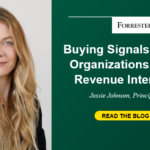Last week, the US Federal Trade Commission released a proposed final ruling banning employers from executing noncompete agreements for nearly all employees – excepting only “senior executives” – and requiring them to notify employees that they’re no longer bound by existing noncompetes. Forrester believes that this will have a significant impact on the people practices of US employers. Whether that impact is positive or negative for your firm is something you can choose.
The lawsuits against the new rule are already beginning. But that pushback is happening against a state-level trend that will be hard to overcome. Four states, including California, already have complete enforcement bans on noncompetes. California’s ban dates back to the 1870’s and its economy has grown such that if it were an independent nation, it would rank as the world’s fifth largest economy. That makes it hard to argue that noncompetes inhibit growth. This still wasn’t enough for California which early this year passed new legislation affirming and strengthening its stance. They’re not alone. With another 81 bills limiting noncompetes currently proposed across 38 state legislatures, the sunsetting of noncompetes is basically a done deal, whether it’s by the state-level efforts or whatever provisions of the new rule remain after the legal challenges run their course at the federal level.
Don’t Fret – Instead Seize Your EX Opportunity
Now is the time to start preparing your strategy for living without the crutch of noncompetes. The bottom line is this: Because this rule grants employees more freedom to choose when and why they leave one employer for another, employers will need to compete to retain the people they have, and to attract new people to join them. That competition comes in the form of improved Employee Experience (EX). That’s why we call this an EX opportunity, a rare golden moment when you still have time to embrace the opportunity that this ruling represents before the consequences fully hit. And to make precisely the EX investments that are already proven to pay off in better customer experience, lower employee turnover, revenue growth, and more. In some ways, this is about the FTC pushing you take the EX medicine you really should have all along.
Employee experience peaks when people have good days at work; when they can leave their workplaces at the end of the day feeling accomplished, and that they made a difference. And emotion is driving that bus. Every employee makes a decision every day, whether they’re aware of it or not, about how much of themselves they’re going to give to their employers and their work. Are they going to pull out all the stops and be wildly productive? Are they going to make customers feel loved and valued? Are they going to collaborate with energy and courage? Are they going to treat their colleagues with dignity and respect? Are they going to work hard to improve their skills and awareness?
Help Your People Find Intrinsic Motivation
The motivation to do these things is called intrinsic motivation – the kind that comes from within us, and springs from the love of the work itself. Employees see noncompetes as unfair because they make them feel trapped, controlled, and manipulated. None of these emotions are good for intrinsic motivation, but they’re good for burnout, which is the opposite of motivation. Burned out employees don’t perform at their best. Their daily journeys through your organization govern their emotional states and, in turn, their motivation.
Stimulate that motivation by seizing this EX opportunity. Read our EX Blueprint research, take our EX assessment and schedule a Guidance Session with David Brodeur-Johnson to discuss.








